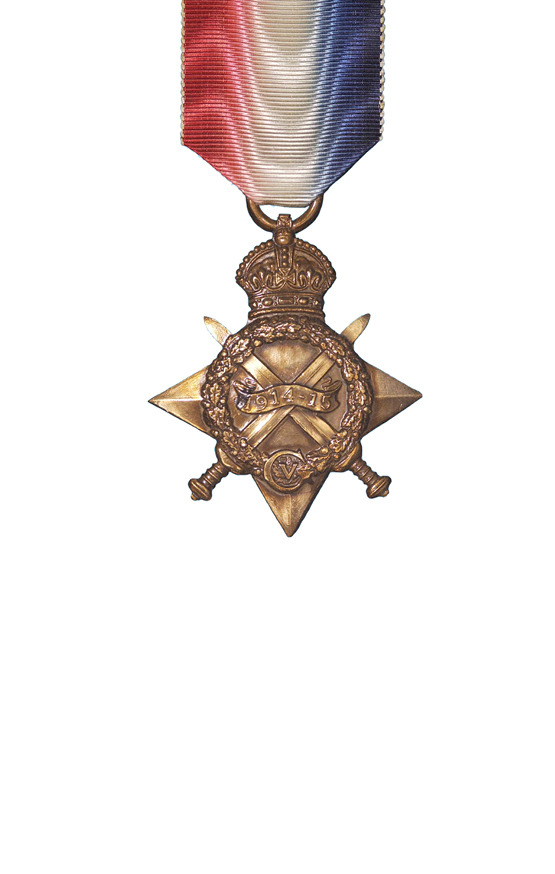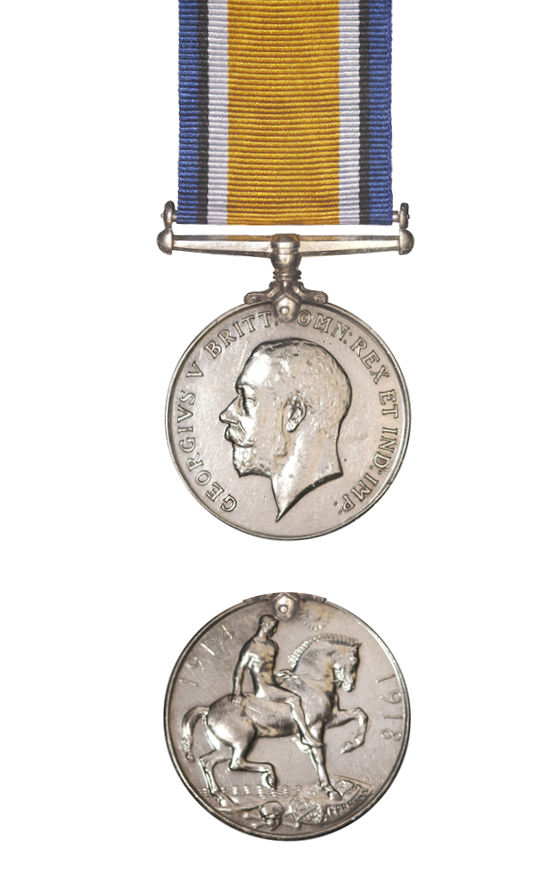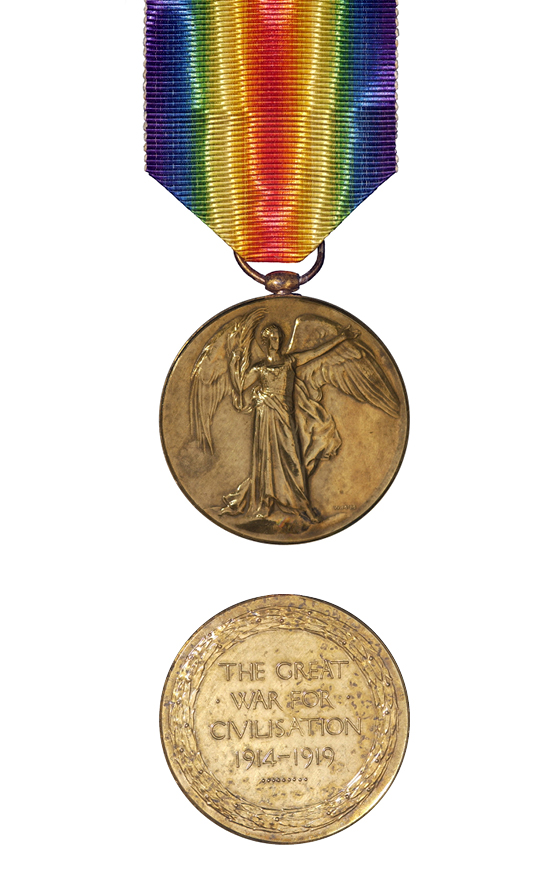

Display No. 8J
BURLEIGH, Cecil Wills
Cecil Burleigh began going to sea in 1886 as a cadet of the New Zealand Shipping Company. He later transferred to the Peninsula and Orient (P&O) Line. During the First World War, Burleigh was in command of the merchant vessel SS Duke of Clarence and in 1915 the ship was requisitioned by the Royal Navy for conversion as an armed boarding steamer. At this time Burleigh retained command of his ship as an officer of the Royal Naval Reserve (RNR). Later that year, Duke of Clarence was deployed to the North Sea to enforce the economic blockade of Germany. On 24th August 1916 Burleigh rescued survivors of SS Duke of Albany which was attacked and sunk by German submarine UB 70. Burleigh and his crew kept the submarine at bay until several destroyers arrived. For this he was created a Companion of the Distinguished Service Order (DSO). He was also Mentioned in Despatches (MiD) the following year. He was promoted to Commodore of Scandinavian convoys. After the war, he continued his mercantile career, becoming a Commodore in the P&O line.
Awarded medal(s)
Medal Description [Left to Right]:
Companion of the Distinguished Service Order (DSO)

The Companion of the Distinguished Service Order (DSO) was instituted in 1886, to recognise acts of gallantry by military officers for which a Victoria Cross was not considered appropriate. In 1942, the regulations were amended to allow the award to be made to officers of the Merchant Navy for gallantry in the presence of the enemy. Following a UK review of gallantry awards in 1993, the purpose of the DSO was changed to recognise outstanding leadership at all ranks. At that time the Conspicuous Gallantry Cross replaced the award of the DSO for gallantry. The DSO was awarded to over 300 New Zealanders during both World Wars. The DSO is no longer awarded in New Zealand since the introduction of New Zealand’s own system of gallantry and Bravery awards in 1999. Bars are awarded for subsequent acts of gallantry. The ribbon is red with narrow blue edges.
The 1914-1915 Star

The 1914-15 Star was awarded to servicemen and servicewomen who served in the First World War between 5 August 1914 and 31 December 1915 in any “theatre of war”, provided they had not qualified for the 1914 Star. This included service at Gallipoli between 25 April 1915 and 31 December 1915, service in Egypt between 5 November 1914 and 31 December 1915, and service during the capture of German Samoa on 29 August 1914. Those eligible for the medal must have “served on the establishment of a unit in a theatre of war” during the relevant dates of operations in that area. The ribbon’s red, white and blue shaded and watered bands represent the flag of the United Kingdom.
The British War Medal

The British War Medal was instituted in 1919 to recognise the successful conclusion of the First World War (1914-1918). Its coverage was later extended to recognise service until 1920, recognising mine clearing operations at sea, and participation in operations in North and South Russia, the eastern Baltic, Siberia, the Black Sea and the Caspian Sea.
The Victory Medal

The Victory Medal was awarded in the First World War to all those who had already qualified for the 1914 Star or the 1914-15 Star, and to most persons who had already qualified for the British War Medal. The Victory Medal was awarded to all New Zealand troops serving overseas, except for those who arrived in Samoa after 30 August 1914 and those serving in Great Britain only. It has a unique double rainbow ribbon.
A bronze spray of oak leaves on the medal ribbon denotes that the recipient was Mentioned in Despatches during the period that the medal recognises. To be Mentioned in Despatches a member of the armed forces has had their name mentioned in an official report, written by a superior officer, and sent to a higher command. The report would describe the individual’s gallant or meritorious action in the face of the enemy.
Royal Naval Reserve Decoration

Instituted in 1908, the Royal Naval Reserve Decoration was awarded to commissioned officers in the Royal Naval Reserve after fifteen years of service; active wartime service counting as double. Recipients are entitled to use the postnominal letters RD. White edging was added to the original plain dark green ribbon in 1941. The VRD was discontinued in the United Kingdom in 1966 but continued to be issued in New Zealand, instituted in 1985 as the Royal New Zealand Naval Volunteer Reserve Decoration with qualifying service backdated to 1977. The New Zealand RD is the exact same design as the RNR Decoration and uses the white edged green ribbon.

